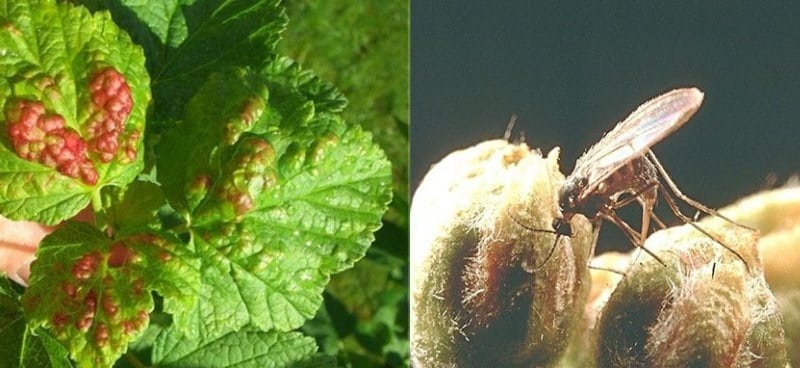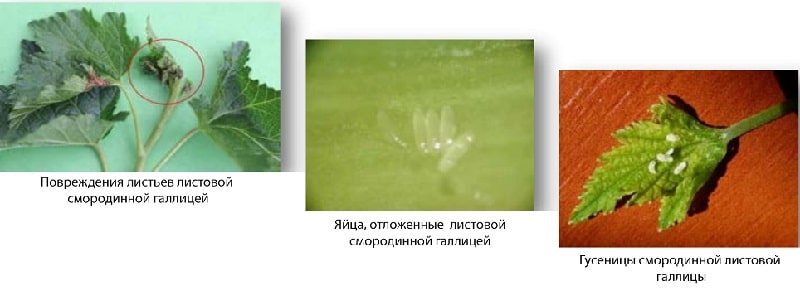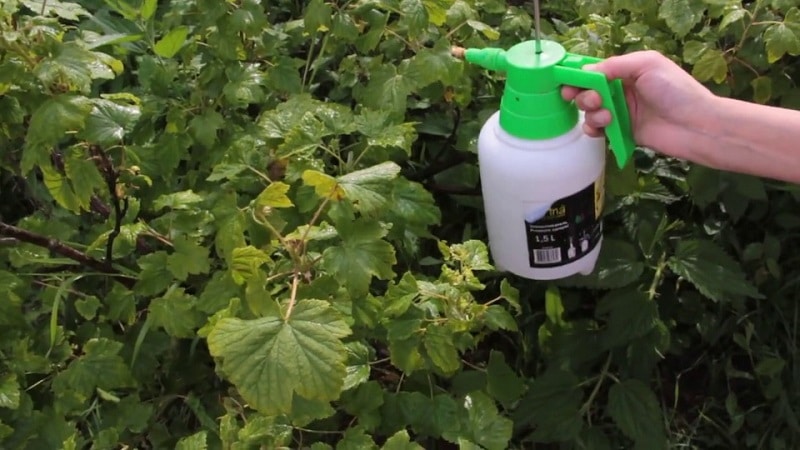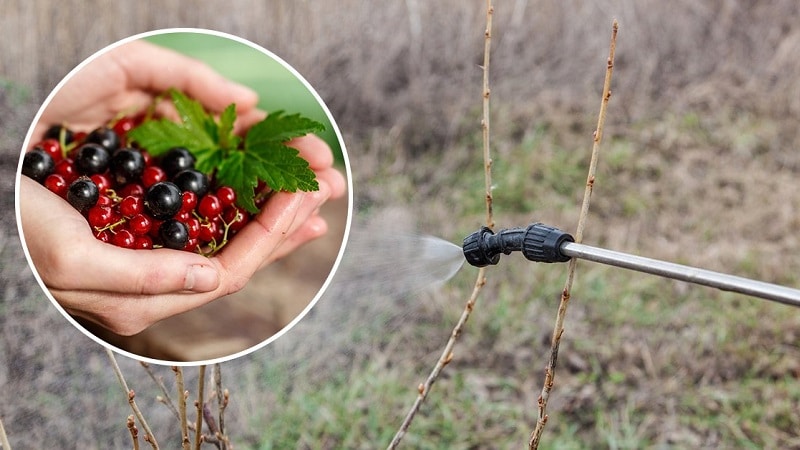What to do if gall midge appears on currants: effective methods of control and prevention
Gall midge on currants is an unpleasant phenomenon that everyone who grows fruit and berry crops on their plot has probably encountered. The greatest danger is posed by the larvae that feed on leaves, shoots and buds. The first signs of blackcurrant infection are deformation of the leaf blades and a change from green to brown.
As they spread, the insects affect the currant flowers, making them ugly and depriving the gardener of a harvest. In this article we will tell you how to get rid of currant gall midge, what means to use for this and how to prevent infection.
What is a gall midge
Currant gall midge is a pest that attacks black currants. The source of food is succulent plant tissue.
Adult females are easily recognized by their orange body and brown back and head. Males are slightly smaller and have long, thin legs. Externally, the gall midge resembles a mosquito with a hairy body.

At the beginning of flowering, a massive growth of leaf gall midges is observed and lasts up to 4.5 weeks. At the height of flowering, adult mosquitoes appear. Females look for a place to lay eggs in the lower part of the bush. The gall midge lives only 2-3 days, but manages to lay 22-140 pieces on currants. eggs
Reference. The insect does not like sunny places; it prefers to hide in the shade, closer to moisture.
Summer begins at the end of summer and lasts 50-60 days.From August to October, the larvae form cocoons to hide in the soil. The leaf gall midge reproduces 2 generations per year. These voracious insects can deprive a gardener of his harvest. According to statistics, on one-year-old shoots the yield is reduced by 50%, on two-year-old shoots - by 65%.
Reasons for appearance
The main reason for the appearance of gall midges on black currants is neglect rules of agricultural technology. The risk of infection increases if the gardener does not collect plant debris from the site in a timely manner, does not plow the tree trunk, does not inspect the bushes, and does not perform preventive spraying.
Stages of development
For black currants, it is not the adults that are dangerous, but their larvae. During the summer period, the pest reproduces 2 generations and colonizes plantings in several stages:
- To begin with, females lay translucent eggs (usually up to 50 eggs) in one place.
- The hatched larvae feed on plant tissue, which leads to depletion of currants. For the winter, the larvae hide under a bush in the upper ball of soil, wrapping themselves in a cocoon of cobwebs.
- In mid-spring the larvae pupate. The process takes 1-2 weeks.
- At the adult stage, which coincides with the flowering of currants, the growth of leaf gall midges occurs. Flower and stem plants are activated during the period of mass flowering. Females lay up to 140 eggs in damaged shoots.
- In July - August, the second generation is formed, which poses the greatest danger to plants, since they are weakened by the first attack of insects. Larvae hatch from eggs laid in September, fall into the ground and form cocoons. Then the cycle repeats.
Pupation occurs exclusively in conditions of high humidity.
Why is the pest dangerous for currants?
Consequences of infection of a currant plantation with gall midge:
- Changing the shape of the leaf plate.
- Attracting other pests.
- Drying of shoots due to loss of nutrients.
- Significant reduction in yield.
- Spread of viral infections.
- Delayed shoot growth and green mass gain.
- Complete death of the plant.
Signs of currant damage by gall midge
In nature, there are about 6 thousand different species of gall midges. Insects mainly attack fruit trees and shrubs. In addition to currant, gardeners are fighting raspberry and pear gall midges.
There are 3 varieties of currants: leaf, stem or shoot, and flower.

Leafy
The most common is leaf gall midge. Infestation can be determined by deformed leaf blades of an unnatural color. The larvae eat mainly young leaves. In case of severe infection they turn brown, curl, lose moisture and fall off. If there are few larvae, the leaves continue to develop, but take on an asymmetrical, ragged shape.
Floral
The flower gall midge attacks the buds. Outwardly it looks like this: the flower swells and acquires a pale yellow or purple color. Deformed buds fly off, and the yield drops significantly.
Stem
Stem gall midges settle in scratches on branches or cracks in the bark. The larvae feed on plant tissue, causing the shoots to dry out and the bark to die. With severe damage, the plant dries out completely.
Is it possible to eat such currants?
Berries from bushes infected with gall midges can be eaten, however, most likely, the gardener will have nothing to collect, especially if there is a massive infestation.The larvae damage the plant even at the flowering stage, so fruit ovaries often do not have time to form.
What to do if gall midge appears on currants
At the first sign of infection, action must be taken. If you let the situation take its course, you may be left not only without a harvest, but also without a currant plantation.
The most effective way to control pests is treatment with chemical and biological agents. Traditional methods will help prevent the spread of insects in the garden.
Chemicals
The fight against gall midges begins during the period of bud setting. Insecticides processing the bushes and the soil beneath them. The procedure is carried out according to the instructions, which clearly indicate when and how many times to spray. It is also important to monitor the timing of re-treatment and see if new signs of infection have appeared.
The following chemicals have proven themselves to be the best:
- "Kinmiks." Suitable for processing large plantations. The drug is sold in ampoules and canisters of 5 liters. The prepared solution enters the insect’s digestive system and destroys it. The chemical remains on the bushes for a long time and provides long-term protection against 1st and 2nd generation pests.
- "Kemifos". Dangerous for adults and larvae. The active substance begins to act 2 hours after spraying. Essential components have a paralytic effect on insects, and additional chemicals have a detrimental effect on egg laying. In soil, the effectiveness of the drug increases significantly.
- "Aktellik". Envelops the entire plant, protecting the lower part of the bush and the back of the leaf. The drug penetrates the larvae’s esophagus, after which they die.

Biological drugs
Biological agents do not have a harmful effect on humans and the environment, but at the same time effectively destroy gall midges. The drugs are based on fungi and bacteria and contain neurotoxins that immobilize and kill the pest.
To destroy gall midges use:
- "Bitoxibacillin." Used in any growing season. Ripe berries can be harvested a week after processing. Before use, wash them thoroughly with warm water, preferably several times. A working solution is prepared from the powder before spraying. Consumption - 2-10 kg per 1 ha. The drug is compatible with chemical and other biological agents.
- "Fitoverm P". It has an intestinal-contact effect, has no analogues in terms of environmental characteristics, stimulates plant growth, and does not have a harmful effect on the environment. It is used for preventive purposes - poured into the hole when planting seedlings.
- "Entobacterin". Microbiological preparation based on the spore bacterium Bacillus thuringiensis var. Gallerae. 1 g of powder contains 30 billion spores, which penetrate the pest’s body and infect it, causing death. For spraying, use a 0.1-1% solution. Consumption - 2.5-5 kg/ha.
Traditional methods
Many gardeners prefer to use folk remedies instead of chemicals, citing the safety of the former:
- Hot water. Early spring after the snow melts bushes are doused with boiling water, killing overwintered gall midge larvae. The branches are pre-tied into a bundle. The method is not used on plants that have begun to gain green mass.
- An infusion based on chamomile, tansy, yarrow, black henbane, and walnut. 300 g of plant material is poured into 10 liters of boiling water and left for 24 hours.Spraying is carried out 3 times a year: before and after flowering, after harvesting.
- Ruberoid. It is laid out under a bush, and a layer of soil is poured on top, which is taken from an area where there is definitely no gall midge. This method reduces the number of adults and, accordingly, the number of eggs.
- Ash and sand are mixed in a ratio of 1:10 and poured into a faceted glass under the bush. The procedure is performed in spring and autumn, creating an unfavorable environment for the pupae. Ash can be replaced with paraffin.
Preventive measures and agricultural technology
Proper care of currants reduces the risk of gall midge infection:
- The soil is plowed and loosened in spring and autumn to prevent pupation.
- Bushes regularly thin out and rejuvenate, providing access to fresh air and sunlight to the plant.
- Only healthy seedlings are selected for planting. When purchasing, planting material is checked for damage, traces of rot and infection with infectious diseases.
- Before planting, seedlings are kept in water at a temperature of +45°C for the purpose of disinfection.
- Plantings are regularly inspected, infected branches and leaves are removed and burned. In this case, you need to act carefully so as not to damage the bark, otherwise gall midges will use such places to lay eggs.
- Ladybugs and lacewings are attracted to the site with the help of pollen-bearing plants: calendula, sweet pea, chamomile.

Advice from summer residents with experience
Use these tips from experienced gardeners to reduce or prevent the damage caused by gall midges:
- Treat the tree trunk circle with tobacco dust and fluff lime (1:1).
- During the summer mosquitoes, hang traps with creolin in the garden.
- New break up the berry patch at a distance of 1 km from the infected black currant.
- In spring and autumn, dig up and loosen the soil, mulch the tree trunk circle with peat chips in a layer of 5-6 cm.
- Remove infected parts along with larvae.
- Trim unnecessary shoots and root shoots on which the pest settles.
Conclusion
The currant gall midge is particularly dangerous if it is not destroyed in time. The best way to prevent infection is to carefully care for the currant plantation: plow the soil, loosen the soil near the trunk and mulch with peat, inspect the bushes and remove the affected parts in a timely manner.
To destroy the pest, chemicals (Kinmiks, Kemifos, Actellik) and biological products (Bitoxibacillin, Fitoverm P, Entobacterin) are used. Traditional methods and remedies are most effective at the initial stage of infection. They are also used as preventative measures. The main components of the compositions for processing are chamomile, tansy, yarrow, black henbane, walnut, ash, sand, tobacco dust.